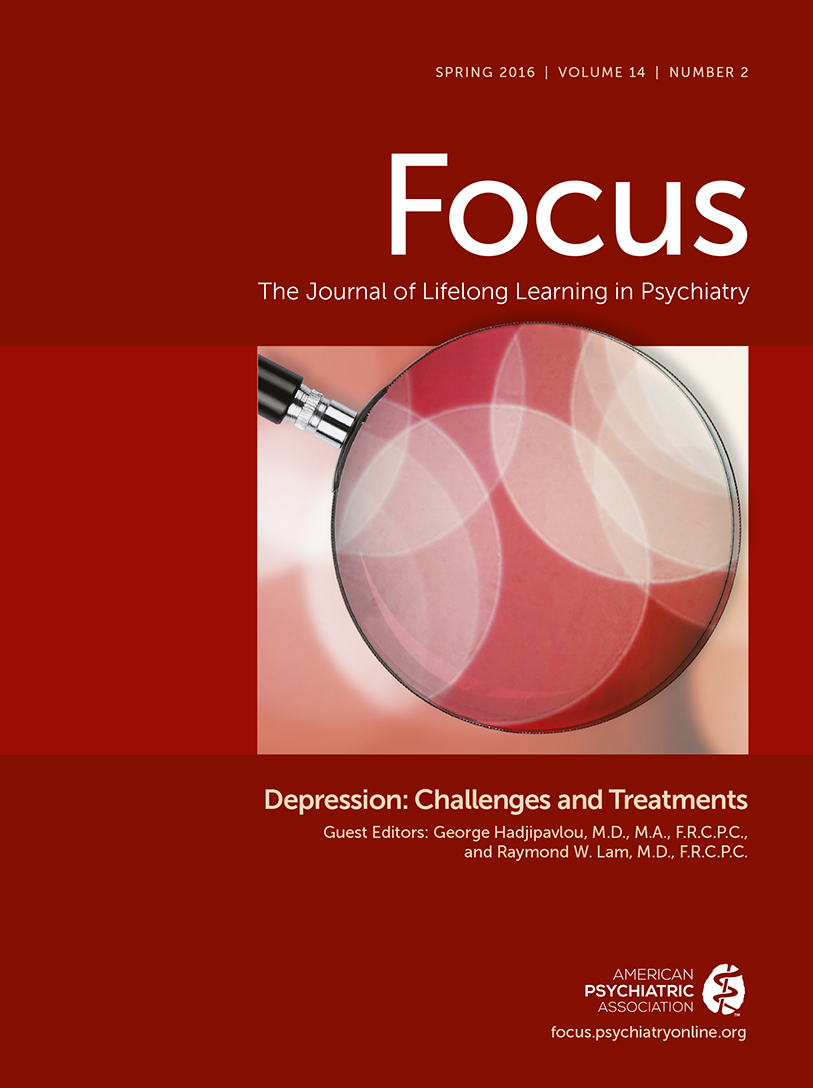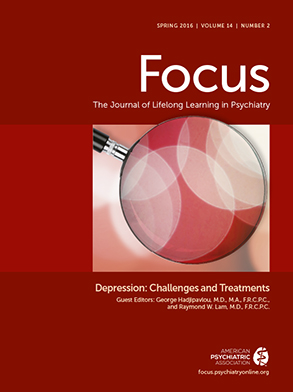Innovative Psychological Treatments for Depression
Abstract
Established High-Intensity Interventions
Cognitive-Behavioral Therapy (CBT)
Behavioral Activation Therapy
Mindfulness-Based Cognitive Therapy (MBCT)
Acceptance and Commitment Therapy
Interpersonal Psychotherapy
Dynamic Psychotherapy
Features of Evidence-Based High-Intensity Interventions
Established Low-Intensity Interventions and Features
Therapeutic Model
Modality of Delivery
Amount and Type of Support
Do Low-Intensity Interventions Work?
Who Provides the Support?
Which Patients Do Well or Poorly With Low-Intensity Approaches?
Conclusions
References
Information & Authors
Information
Published In
History
Authors
Funding Information
Metrics & Citations
Metrics
Citations
Export Citations
If you have the appropriate software installed, you can download article citation data to the citation manager of your choice. Simply select your manager software from the list below and click Download.
For more information or tips please see 'Downloading to a citation manager' in the Help menu.
View Options
View options
PDF/EPUB
View PDF/EPUBLogin options
Already a subscriber? Access your subscription through your login credentials or your institution for full access to this article.
Personal login Institutional Login Open Athens loginNot a subscriber?
PsychiatryOnline subscription options offer access to the DSM-5-TR® library, books, journals, CME, and patient resources. This all-in-one virtual library provides psychiatrists and mental health professionals with key resources for diagnosis, treatment, research, and professional development.
Need more help? PsychiatryOnline Customer Service may be reached by emailing PsychiatryOnline@psych.org or by calling 800-368-5777 (in the U.S.) or 703-907-7322 (outside the U.S.).

